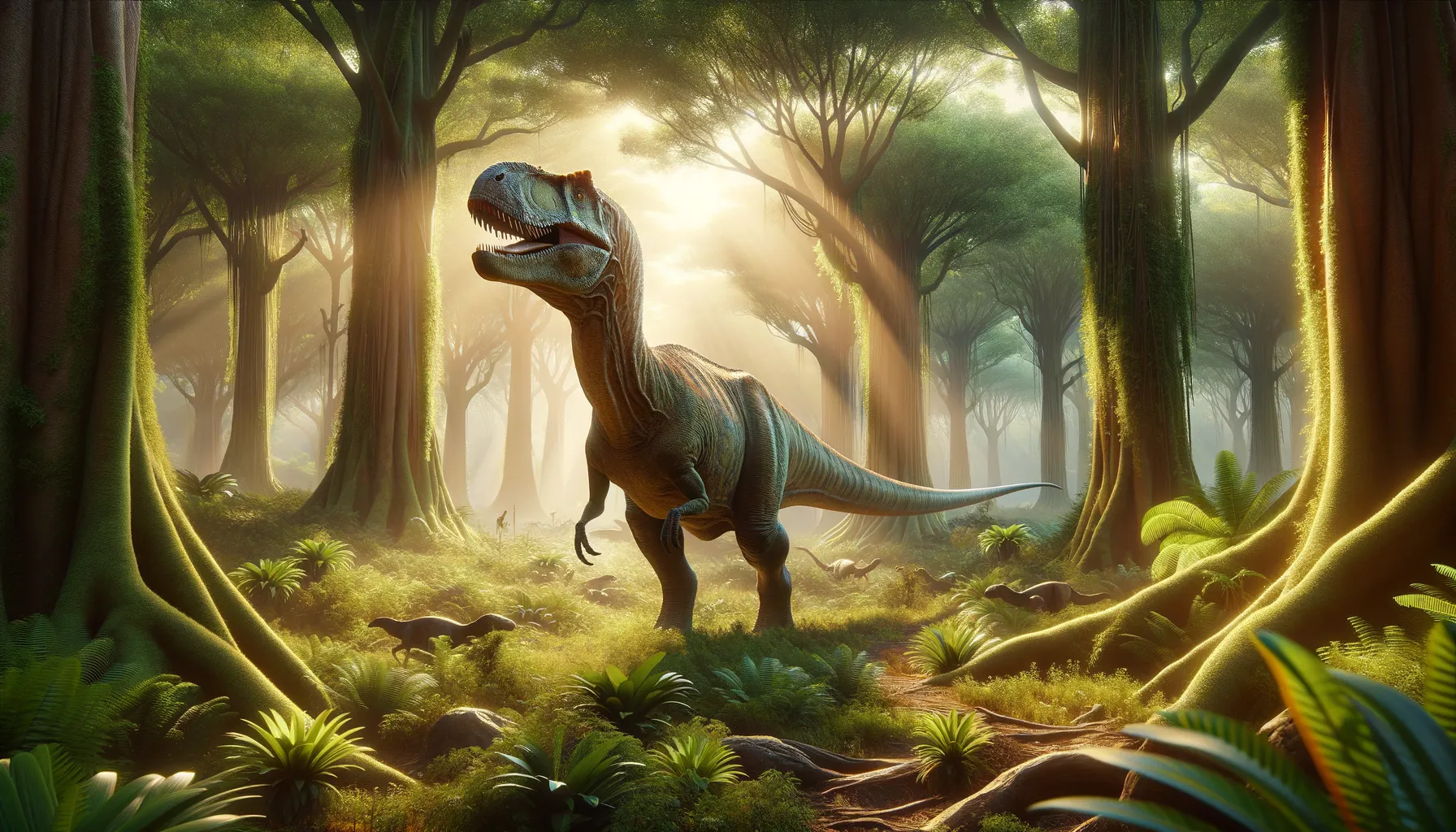
Muyelensaurus
A gentle giant from the Cretaceous era.
Period
Cretaceous
Length
Roughly 66 feet in length.
Height
Approximately 15 feet tall.
Weight
Estimated between 5 to 10 tonnes.
Muyelensaurus is a fascinating dinosaur from the Late Cretaceous period. This titanosaur lived in what is now Argentina and is known for its long neck and tail. The dinosaur's structure suggests an herbivorous diet, likely feeding on the lush vegetation of its environment. Fossil evidence gives us a glimpse into its massive size and impressive adaptation to its surrounding landscapes, making it an intriguing subject of study for prehistoric enthusiasts.
Diet
Muyelensaurus was a herbivore, primarily feeding on leafy plants and vegetation. Its long neck allowed it to reach high branches and foliage.
Hunting
As an herbivore, Muyelensaurus did not hunt other animals. It likely spent its days foraging for food in the abundant plant life of its environment.
Environmental challenges
Muyelensaurus faced environmental challenges such as climate changes that could affect vegetation growth. Competition for food with other herbivores was a possibility, potentially influencing its feeding strategies. Predation from large carnivorous dinosaurs posed another significant challenge. The changing landscape might have required adaptive strategies for survival.
Speed
Slow-moderate due to large size.
Lifespan
Estimated to be several decades.
First discovery
Discovered in Argentina in 2007.
Fun Facts
- Muyelensaurus was a medium-sized dinosaur that lived about 87 million years ago during the Late Cretaceous period.
- This dinosaur was a type of sauropod, known for its long neck and tail, similar to much larger dinosaurs like Brachiosaurus.
- Muyelensaurus fossils have been found in Argentina, making it part of the rich dinosaur history of South America.
- Despite being smaller than some of its giant cousins, Muyelensaurus still measured around 20 meters (about 65 feet) in length.
- It was a herbivore, meaning it fed on plants, using its long neck to reach vegetation in various heights.
- Muyelensaurus is one of the many dinosaurs that help scientists understand the diversity of prehistoric life in the ancient continent of Gondwana.
Growth and Development
Muyelensaurus grew to become one of the largest land animals, with a growth pattern similar to other sauropods. It likely experienced rapid growth during juvenile stages to achieve its enormous size. Full maturity might have been reached over several decades. Its growth would have been influenced by its diet and environmental conditions.
Habitat
Muyelensaurus lived in a lush, vegetated environment with abundant plant life. This supported its herbivorous diet and provided ample food resources. The area had varying landscapes, including forested regions and open plains. The habitat sustained a variety of dinosaur species, offering a dynamic ecosystem.
Interaction with other species
Muyelensaurus coexisted with a range of other dinosaur species. It likely had minimal aggressive interactions, given its herbivorous nature. Its size could deter potential predators, but it might have formed loose herds for protection. Interaction would have been primarily passive, centered around shared food resources.
Natural lifespan
Muyelensaurus likely had a natural lifespan reaching several decades.
Reproduction
Reproduction likely involved laying eggs in secure locations. Like other sauropods, Muyelensaurus might have produced multiple eggs in a single clutch. Parental care could have been minimal, leaving eggs in concealed nests. Offspring would have been vulnerable in early stages, growing rapidly to defend themselves.
Social behaviour
Muyelensaurus may have lived in small groups or herds for protection. Being together could have provided safety from predators. Social behavior might have involved basic communication through vocal sounds. Its interaction was likely centered around group movement and foraging.
Fossil locations
Muyelensaurus fossils have been primarily located in Argentina. The fossil sites provide valuable insight into the Late Cretaceous fauna of that region. The discovery of its fossils has contributed significantly to our understanding of titanosaurs. These sites are important for paleontological research and continue to be investigated.
